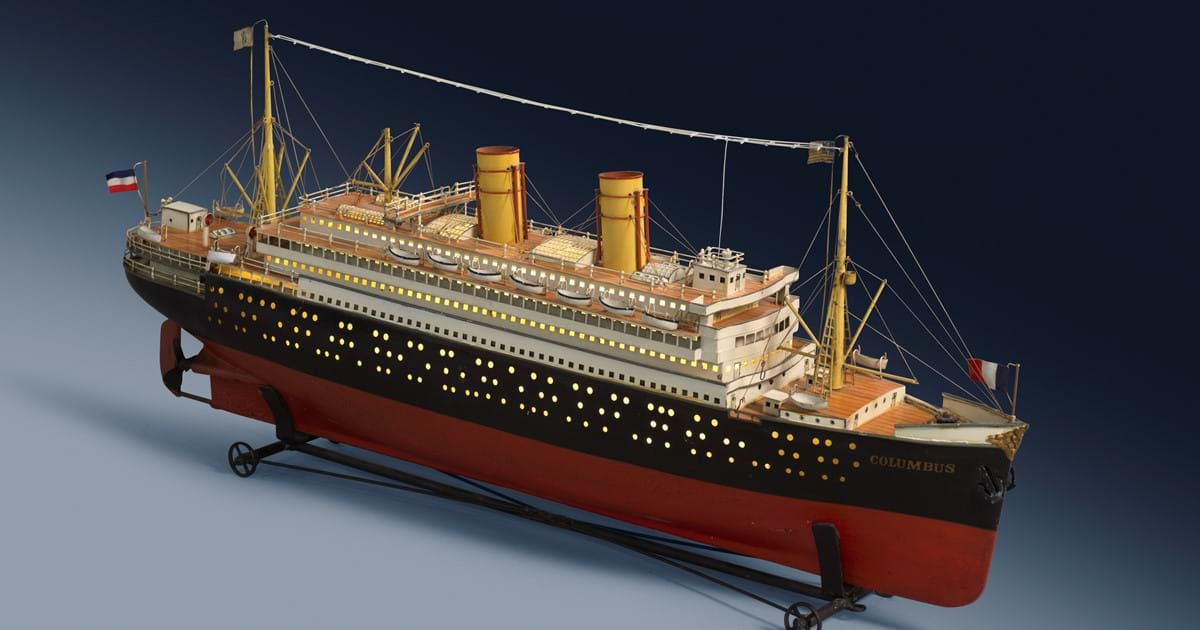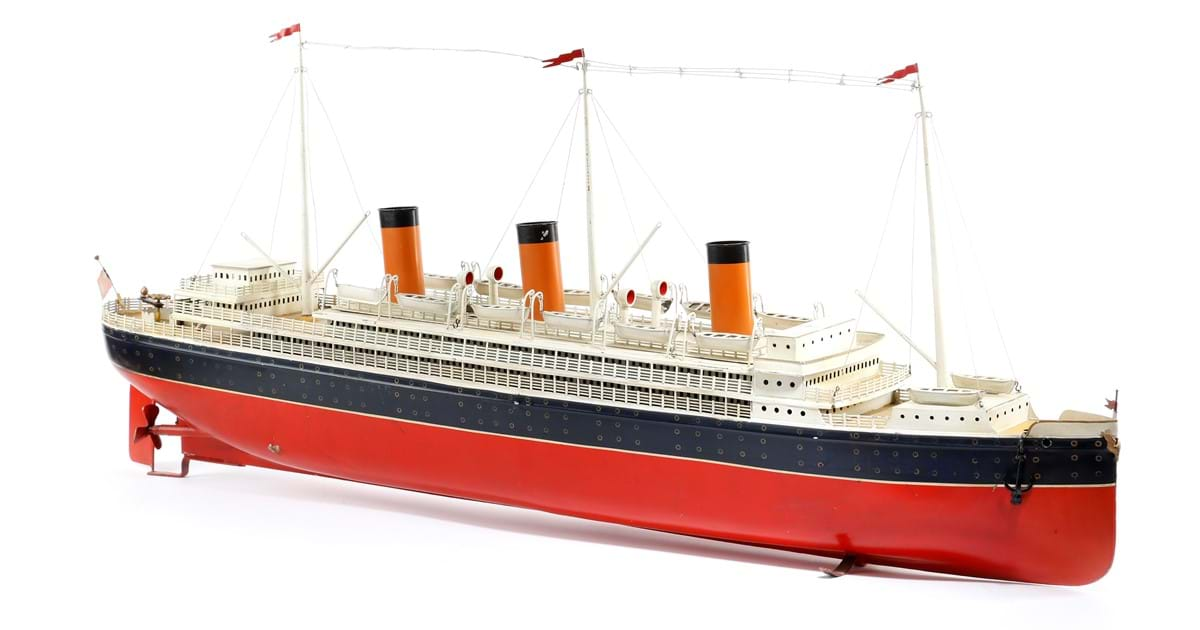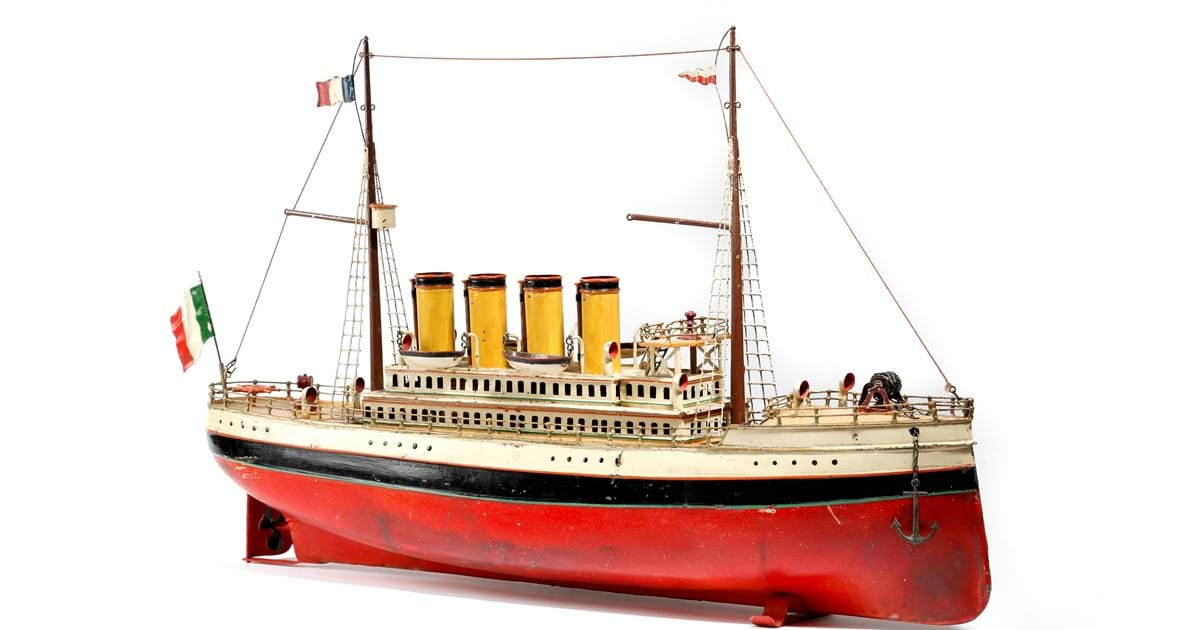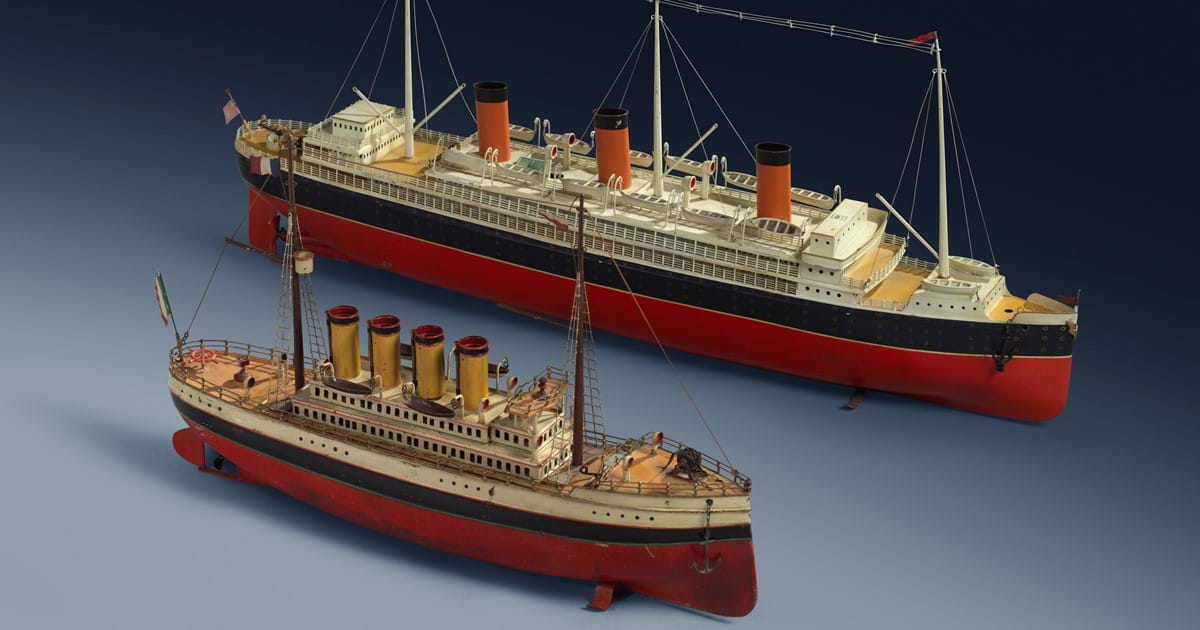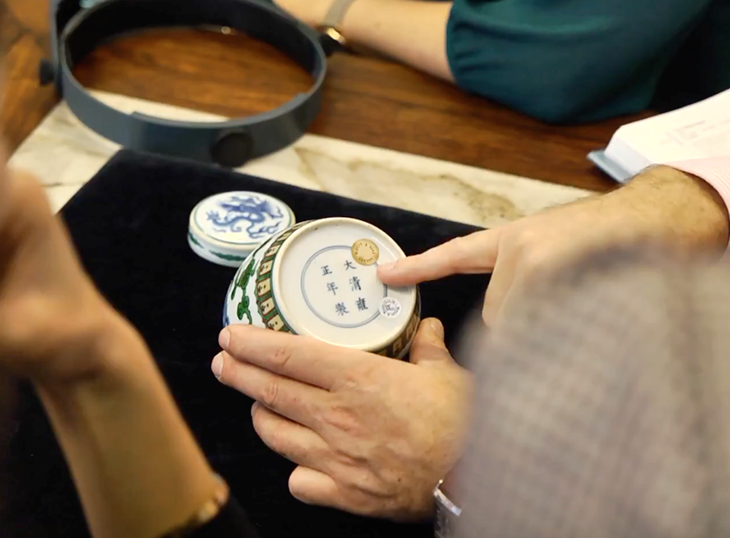Ship to shore
6th August 2020A model of a German ocean liner, built around the same time as the Titanic, reveals a tale of the race for luxury ocean cruising and of crushing post-war reparations.
The metre-long tinplate display model (lot 455) is one of three being sold on 11th August and is a perfect replica of the German ship, Columbus, which was built by NDL (Norddeutscher Lloyd) for transatlantic voyages. She was launched in 1913 and the miniature replica of her 236 metre frame would have sat on display with a travel agent to entice potential sea-faring passengers.
With the First World War putting a halt to luxury ocean cruising, Columbus saw little service and was ceded to the British in 1919 as part of war reparations then sold to the White Star Line in 1920 – ironically the very company with which she had been built to compete.
Renamed RMS Homeric, she filled the gap in the White Star Line’s fleet which had been left by the loss of the Titanic in 1912, and of the Oceanic and Britannic during the war. Her regular route was between Liverpool and New York, a journey which she undertook many times between 1922 and 1935. Three years into her service she was involved in a scandal surrounding the loss of the Japanese ship Raifuku Maru, to whose aid she had scrambled after receiving a distress call. Unfortunately, rough seas prevented her getting close enough to the stricken ship to be of assistance and the crew and passengers watched helplessly as the ship went down with the loss of all 38 hands. On Homeric’s return to New York, several passengers spoke to the press, complaining that the ship could have done more – leading to the Japanese press accusing the White Star Line of racism. The accusations were strenuously denied.
RMS Homeric was scrapped in 1936 as the continuing Depression badly affected the financial situation of the White Star Line. Some of her interior furnishings survive today (including in the Rex Cinema at Stonehouse in Scotland) but the ship herself now exists only in scaled down form.
“This tinplate display ship was made by Marklin, the German toy firm, and is of exceptional quality,” explains Furniture and Works of Art specialist Mark Yuan-Richards. “Ocean liners of this type represented the height of luxury just over a century ago, and a display model like this would have been a real talking point to draw potential passengers in. Marklin still has a fantastic reputation for train sets, and models like these are extremely popular with collectors.”
As a footnote to the story of Columbus, NDL renamed her sister ship (Hindenburg) as Columbus and launched her in 1924, two years after the original liner began operating from England. She had a long and successful career but when war broke out in 1939 she was sighted at sea by a British destroyer. Rather than lose a second Columbus to the British, the crew scuttled her and watched from the safety of a passing American cruiser as she burned and sank.
The model of the original Columbus is expected to make upwards of £5,000 when it comes under the hammer in the Furniture and Works of Art sale on 11th August, alongside two smaller models by German manufacturers Bing and Carette. View the details here.

